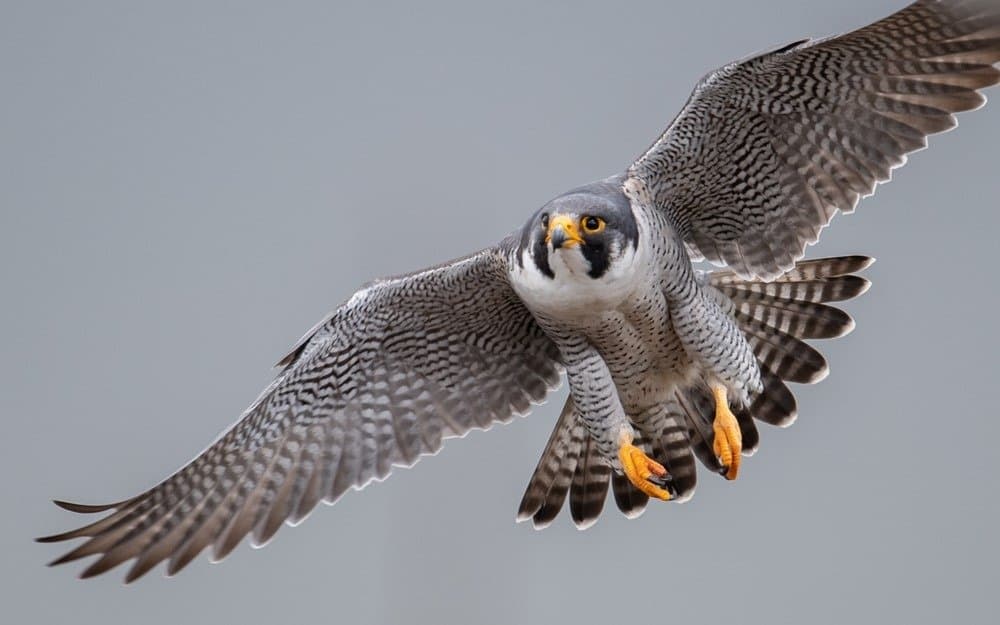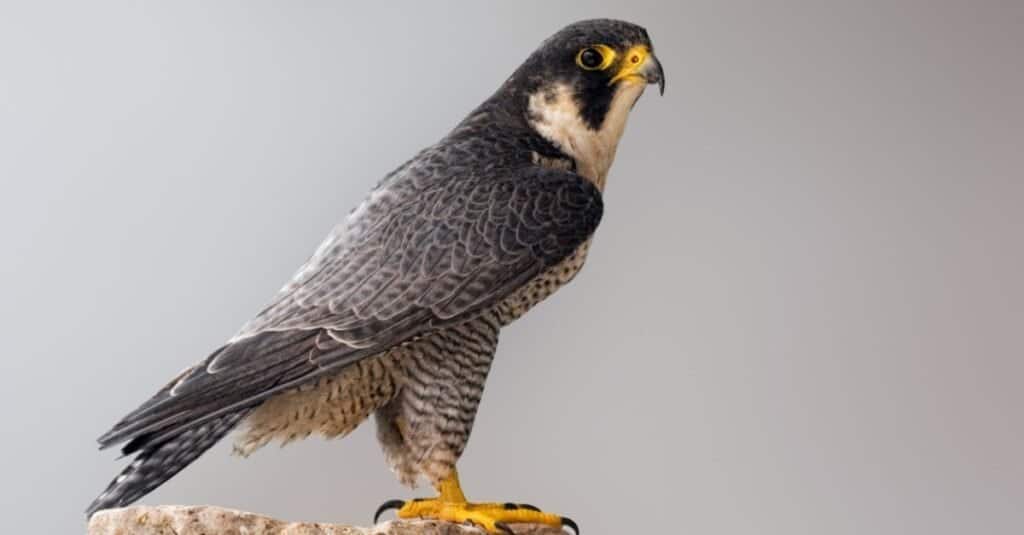Continue reading for our analysis...

Peregrine falcons are fast, massive predatory birds. This falcon can snag other birds even while flying thanks to its powerful, piercing yellow talons. Due to their swift flying and camouflage coloring, peregrine falcons can be challenging to detect. You can witness the speed and skill of this beautiful bird of prey in the video below.
The head and back are a deeper brown, while the wings and tail are grayish-blue. There may occasionally be a dark brown tear-shaped marking on the cheeks. Its eye is encircled by a yellow circle, and the bird’s chin and neck are both white.
Its white chest is framed by dark-brown bands. Deep brown bands can also be seen running the length of the wings when they are open. A peregrine falcon‘s wingspan is 3.5 feet, and it stands about 1.5 feet tall.

A Peregrine Falcon perched on a rock. The peregrine falcon is the most populous and widely dispersed raptor in the world.
©iStock.com/hstiver
The main prey of peregrine falcons is other birds. They eat a wide range of species; 450 species in North America have been recorded as prey, and it’s possible that there are as many as 2,000 globally. Falcons have been known to eat birds of all sizes, including songbirds and sandhill cranes.
Egrets, ducks, grebes, seagulls, pigeons, and finches are some of their usual prey. In addition to eating bats, peregrine falcons sometimes take fish and rats from other birds. What’s most impressive about this creature is its speed. Thanks to a Youtube video included at the end of this post, we get to witness how fast these birds can plunge!
Peregrine Falcon Speed
Falcons build their nests on cliffs that are at least 1,300 feet high. They have also been observed along the Grand Canyon’s edge. The fastest diving bird in the entire globe is the peregrine falcon. It was once recorded that the record-breaking falcon dove at a speed of 186 miles per hour.
Peregrine Falcons are renowned for their elegance, speed, and stunning aerial acrobatics, but some individuals are also known to travel extraordinarily large distances. The Peregrine Falcon migrates from its breeding grounds to its non-breeding grounds and back each year in the northern half of its territory.
Some of these birds are making annual round trips of more than 20,000 miles from the Arctic almost to Antarctica. That would be equivalent to traveling around the entire country seven times in a single year!
Possibly because of their incredible hunting and soaring abilities, peregrine falcons have long held cultural importance for people. They were once regarded as the birds of nobility and are nevertheless among the most popular birds in the sport of falconry today.
At airports nowadays, Peregrine Falcons trained for falconry are occasionally flown by their handlers to frighten away ducks and other birds that might crash into an aircraft and cause mishaps.
Peregrine Falcons hunt their food in a quick aerial chase, fluttering their wings frantically in search of a meal when they are not descending to catch their victim. A Peregrine Falcon can rival the speed of a cheetah in horizontal flight despite its inability to move as quickly as it can in a nose dive.
Thank you for reading! Have some feedback for us? Contact the AZ Animals editorial team.







